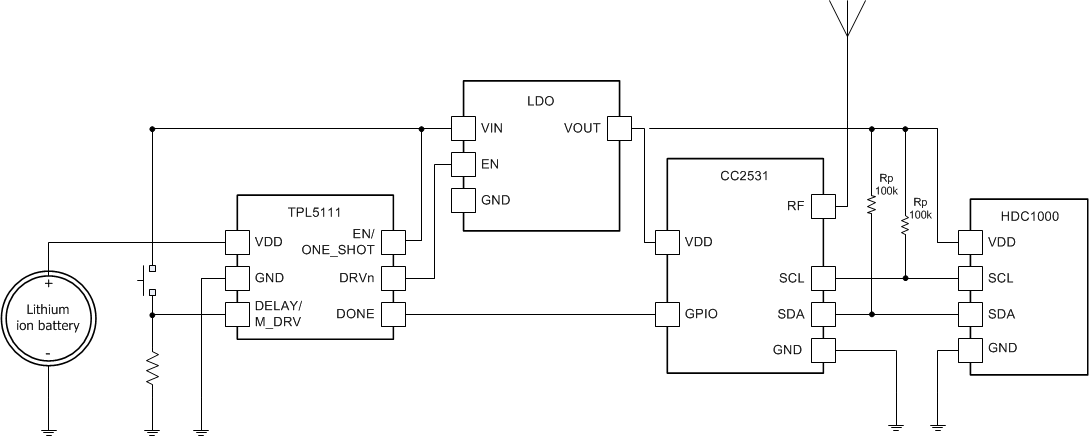ZHCSDX1B June 2015 – September 2018 TPL5111
PRODUCTION DATA.
- 1 特性
- 2 应用
- 3 说明
- 4 修订历史记录
- 5 Pin Configuration and Functions
- 6 Specifications
- 7 Detailed Description
- 8 Application and Implementation
- 9 Power Supply Recommendations
- 10Layout
- 11器件和文档支持
- 12机械、封装和可订购信息
8.2 Typical Application
The TPL5111 can be used in environment sensor nodes such as humidity and temperature sensor node. The measured the humidity and temperature data may be transmitted to a host controller through a low power RF micro such as the CC2531. The temperature and the humidity in a home application do not change quickly, so the measurement and the transmission of the data can be done at very low rate, such as every 30 seconds. Using the TPL5111 as a system timer it is possible to completely turn off the RF micro when not transmitting and extend the battery life, as shown in Figure 14. The TPL5111 will turn on the LDO when the programmed time interval elapses. The manual Power ON switch can also be used to override the periodic turn-on behavior and enable on-demand power on.
 Figure 14. Sensor Node
Figure 14. Sensor Node